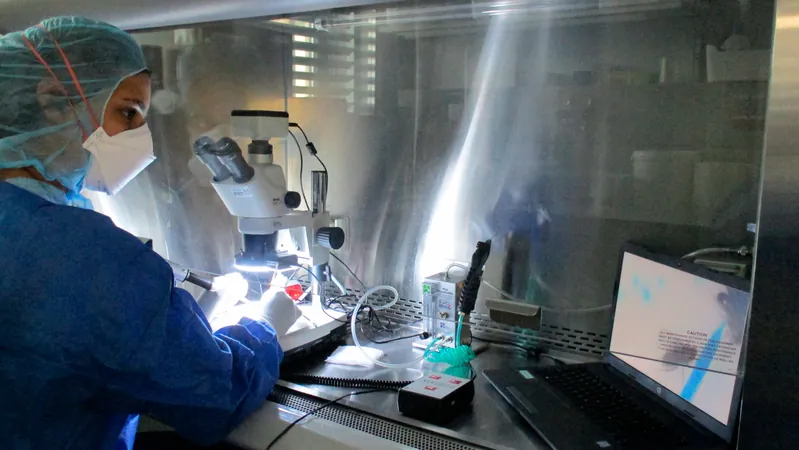
Revolutionary Advance in Polymeric Nanomaterials Sets the Stage for Enhanced Gas Detection in Extreme Conditions
2024-11-25
Author: Jia
Introduction
In a groundbreaking development, researchers at the Korea Institute of Science and Technology (KIST), in collaboration with Dr. Jang Ji-soo and Yale University’s Professor Mingjiang Zhong, have unveiled a new class of polymeric nanomaterials that promise to revolutionize the detection of harmful substances, particularly in extreme environments. This innovation comes amidst growing concerns over safety in hazardous spaces, such as battlefields and fire sites, where the detection of toxic gases is critical.
Challenges with Traditional Polymers
While traditional polymers have found their niche in flexible and lightweight applications, like wearable electronics, they have been hindered by low electrical conductivity and reliance on harmful solvents. This new research tackles those issues head-on, creating environmentally friendly conductive polymers that are highly effective in challenging conditions.
Innovative Polymer Design
By introducing ionic pendant groups into the polymer's structure, the researchers successfully synthesized conjugated polymers that dissolve in eco-friendly solvents, specifically 2-methylanisole, rather than toxic alternatives commonly used in the industry. This breakthrough not only enhances the performance of these materials but also allows them to maintain stability and efficiency in extreme heat and humidity, withstanding temperatures up to 200°C and humidity levels of 80%.
The N-PBTBDTT Polymer
At the core of this development is the N-PBTBDTT polymer, which features an innovative n-type conductive characteristic. This polymer showcases an exceptional ability to detect harmful gases like nitrogen dioxide (NO2) with an incredible sensitivity rating of 189%, even at trace concentrations as low as 2 parts per billion (ppb). Such sensitivity places this new technology far ahead of conventional sensor methods, making it a game-changer for various applications in industries that are often confronted by dangerous environmental conditions.
Potential Impact on Safety
Dr. Jang Ji-soo highlighted the potential impact of these sensors, stating, "This technology takes chemical sensing beyond the ordinary. It has the capacity to improve safety for professionals like firefighters and military personnel exposed to hazardous gases." The team of researchers envisions a future where these sensors are integral to personal protective equipment, providing real-time monitoring of air quality and safety levels.
Conclusion
This cutting-edge research represents a significant leap forward in creating reliable and efficient solutions for gas detection, addressing both environmental and practical challenges faced by various sectors. The team's findings have been published in the esteemed journal Advanced Functional Materials, further solidifying the importance of their work in the field of energy materials and safety technology.
Looking Ahead
As industries look to adopt more sustainable practices, this innovation is not just timely; it is critical. With potential applications ranging from industrial safety equipment to personal wearable devices, the future looks bright for these advanced polymeric nanomaterials, paving the way for a safer tomorrow.
Stay Tuned
Stay tuned for more updates on this exciting development, which could very well change the landscape of gas detection technology forever!




 Brasil (PT)
Brasil (PT)
 Canada (EN)
Canada (EN)
 Chile (ES)
Chile (ES)
 España (ES)
España (ES)
 France (FR)
France (FR)
 Hong Kong (EN)
Hong Kong (EN)
 Italia (IT)
Italia (IT)
 日本 (JA)
日本 (JA)
 Magyarország (HU)
Magyarország (HU)
 Norge (NO)
Norge (NO)
 Polska (PL)
Polska (PL)
 Schweiz (DE)
Schweiz (DE)
 Singapore (EN)
Singapore (EN)
 Sverige (SV)
Sverige (SV)
 Suomi (FI)
Suomi (FI)
 Türkiye (TR)
Türkiye (TR)